
| by Delfina de Araujo (final) |

| by Delfina de Araujo (final) |
Apa
Morro do Leme  |
|
Since
the end of the 80 decade, under the leadership of Plínio Loures
Senna, in a work gathering the community, through SoAPA Leme, Army and
the City Hall through the Parks and Gardens Foundation (Fundação
Parques e Jardins), this area has being reforested and conserved. APA Leme Hill's history started in 1987, when, through the Association of Leme's Habitants and Friends (Associação de Moradores e Amigos do Leme - Amaleme), after an accord with the Army (Duque de Caxias fortress and Centro de Estudo de Pessoal are located at Leme Hill), Plínio Senna claimed the City Hall of Rio de Janeiro to do the reforestation of the area. Immediately, Parks and Gardens Foundation started the work which is the base of the project, gave technical support and send people to work in the deforested hillsides, pulling away the grass, planting trees and maintaining the areas already worked. The duty of the Brazilian Army was giving logistic support as well the transport of cuttings scions and feed the staff, when necessary. Nowadays, the Brazilian Army is the guardian of the area. |
 |
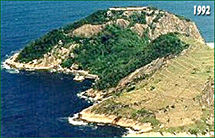
|
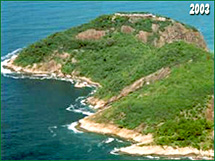 |
|
1987
- THE BEGINNING OF THE PROJECT - We can see, yellow spots, the land covered
with a dense growth of grass which gets fire, destroys and takes the place
of the Atlantic Forest (dark green on the picture). The sides of the road
to Duque de Caxias Fortress (in the middle, at the top) are colonized
by the colonião-grass and the forest is disappearing. 1992 - AFTER 5 YEARS OF WORK- The reforestation has already recuperated degraded areas in the NE face of Leme Hill, joining the two "islands " of remain wood. In Urubu Hill, at the right side, we can the new area of reforestation, with the grass cut down and the cutting scions planted. 2003 - We can see the spectacular recuperation of Atlantic Forest which took 15 years of work. There still are places which needs maintenance and, always are the areas just destroyed by people which need new work to maintain the remaining. |
|
The
Environment Board of Amaleme, administration from 1987 to 1994, performed
a priceless collaboration in this Environmental Conservation Project working
together of Parks and Gardens Foundation, promoting the study of the flora,
with the help of the Applied Ecology Service from FEEMA and other researchers,
doing the survey of the avifauna with the support of the Club of Birds
Observes (Clube de Observadores de Aves - COA) and obtaining the study
of butterflies by the National Museum from the Federal University of Rio
de Janeiro UFRJ. The Ecological Group Action (Grupo Ação
Ecológica - GAE) has also collaborated in this project. Later the Society of APA Leme Hill Friends (Sociedade de Amigos da APA do Morro do Leme) - SOAPA Leme has been created and goes on with the work which can't b interrupted. The result shows that there is no doubt about the importance of the projects like this and the collaboration of the different entities to assure the continuity. With an area perhaps superior to the urban area of Leme quarter, APA Morro do Leme, with 12 hectares of the Atlantic Forest and more 16 in process of reforestation by the Environmental Conservation Project, covers Leme and Urubu hills and Cotunduba Island. It has more than 90 species of birds, between them 5 different species of hummingbirds. The butterflies are also present with 33 species. It is habitat of 7 species of threatened plants and 6 species of native fig trees. Showing the quality of the wood, orchids (7) and bromeliads (16) are found very easily. The importance of the recuperation and conservation of this small area can be measured by the great number of vulnerable, in danger or threatened of extinction species in many families, flora as well fauna, such as: |
 Dorstenia arifolia Lam. (Caiapiás), |
 Caesalpinia echinata Lam (Pau Brasil), |
 Tessarandra fluminensis , a monospecific genus (ust only one species) which is endemic to our region |
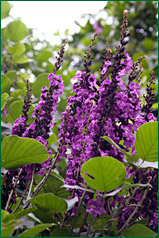 "olho de boi" which shelters the ova of the wormlike larva of the butterfly "capitão-do-mato" (Morpho achilles achillaena), |

the molembá Ficus hirsuta (which can reach 30m high), |
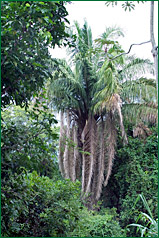 indaiá coconut tree , |
| Pequiá-das-pedras
(Aspidosperma gomezianum A.DC.). Or smaller plants such as Velozia Pleurostima purpurea Raf., Tillandsia araujei, neoregelia, |
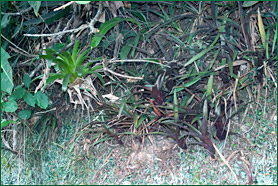 Vriesea procera, regina and goniorachis, |
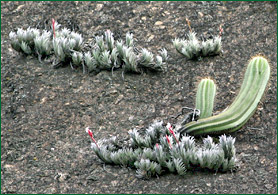 Cephalocereus fluminensis, cactus to which Tillandsia araujei occurs associated, |
Climbing
plantas such as Passiflora
racemosa,
with its beautiful orange flowers. 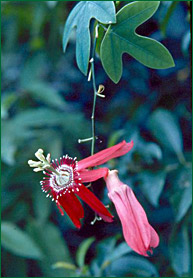
|
All
this, without talking about the white, blue, orange, yellow, gray butterflies,
totaling 33 species. There is the "pop" Hamadryas februa,
an interesting species which lays upside down, wings opened and also
the only one which can hear and the wonderful blue butterfly "capitão-do-mato"
(Morpho achilles achillaena). This place has been chosen as a key- point to the observation of the butterflies capitão-do-mato and big owl (Caligo) because of the easy access to the Brazilian and foreign experts and by the safety guarantee by the Brazilian Army. We can't forget the presence of 5 species of hummingbirds and 90 species of birds standing out Tiê-sangue (Ramphocelus bresilius) with intense colorful and others which fill the wood with their songs all day along. |
 |
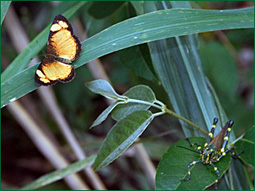 |
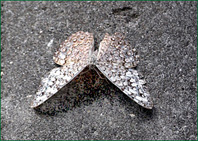 |
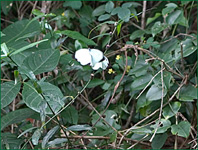 |
 |
 |
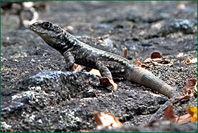 |
 |
|
No
doubt about, APA Morro do Leme is a good new mainly because we just hear
about species threatened of extinction, deforested areas, destroyed habitats
to allow pasturage, habitation, agriculture or just to sell woods. The place can be visited every Saturday, Monday and holidays , from 9 am to 5 pm. The information has been obtained in the site of SoAPA-Leme, in interview with Plínio Sena and his articles published in Albertoa (Feema magazine). Visit the site SOCIEDADE DE AMIGOS DA APA DO MORRO DO LEME - SoAPA-Leme http://www.morrodoleme.hpg.ig.com.br |
| Bibliography: - Magazine Albertoa, volume 3(15): 141-152.1993 - Impacto Ambiental causado por eventos comemorativos na escarpa rochosa do Morro do Leme, Rio de Janeiro, Plínio Loures Senna. - Magazine Albertoa, volume 3(16): 153-164.1993 - A Figueira vermelha e sua importância na alimentação da avifauna e na conservação da natureza, Plínio Loures Senna. - Orquídeas do Estado da Guanabara, Guido Pabst, 1966. - Orquidário 5(1): 21-23. 1991, Augusto Fernandes Neves. O gênero Eulophidium Pfitz. - The illustrated Encyclopedia of Orchids,. Timber Press, edited by Alec Pridgeon. 1994. - Orchidaceae Brasilienses, Guido Pabst & Dungs Sites visited http://www.morrodoleme.hpg.ig.com.br http://www.rio.rj.gov.br http://www.rio.rj.gov.br/smac/ap_list.htm Photos by: Sergio Araujo and Plínio Senna |
|